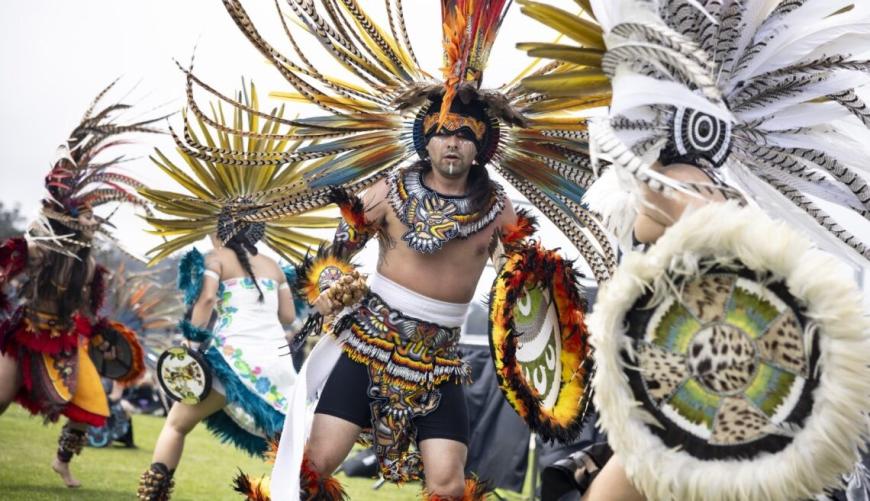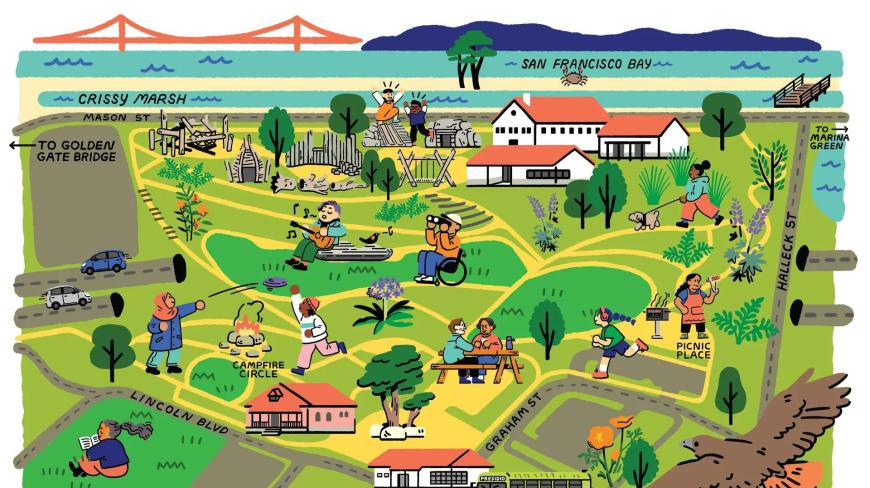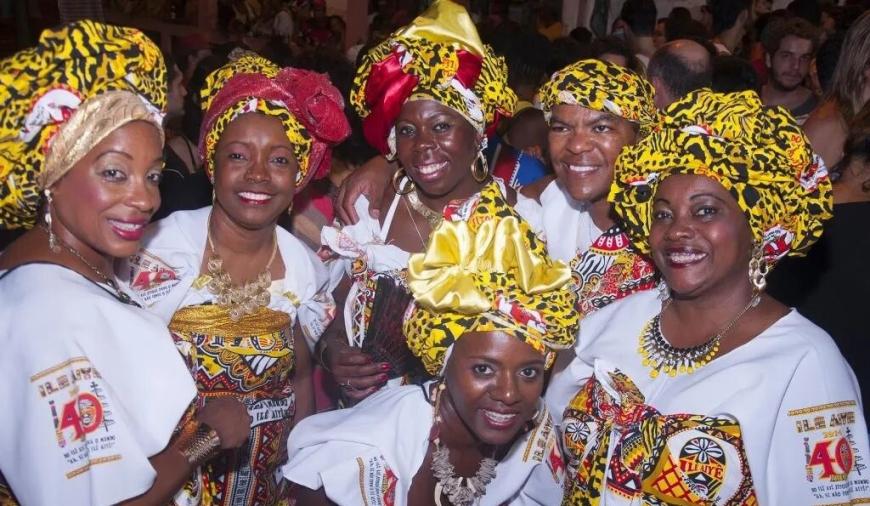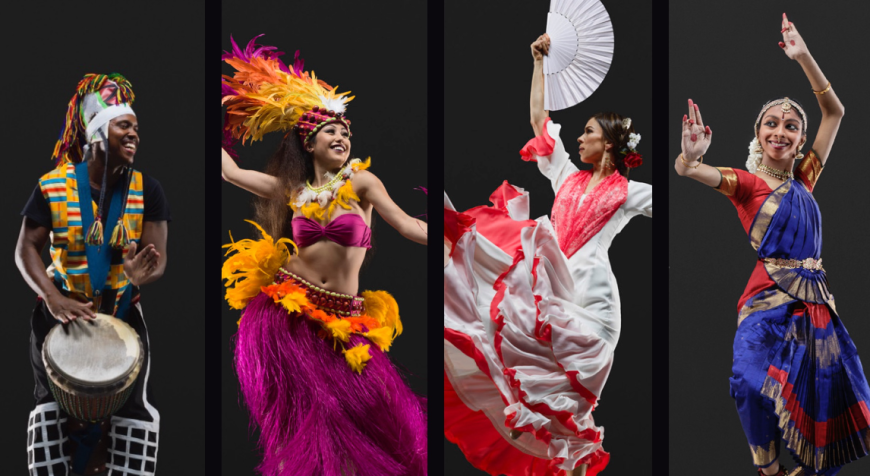
Since 1978, the San Francisco Ethnic Dance Festival and its umbrella organization, World Arts West (WAW), have faced many challenges but achieved fame and fortune (in all but dollars and cents).
First temporarily, later permanently evicted from its home at the Palace of Fine Arts — by restoration work and by an unaffordable rent increase by the city, respectively — the festival kept bouncing back, including in two big, triumphant seasons in the War Memorial Opera House, 2017 and 2018, “as a beacon illuminating the city’s celebration of national, ethnic, and cultural diversity.”
Then came, in quick succession, financial problems, reorganization, the pandemic, and much else — more details below. First, in the here and now, an event coming this weekend.
On Sunday, Sept. 10, from 1 p.m. to 4 p.m., WAW will offer a free show on the East Meadow of the Presidio’s spectacular new Tunnel Tops. The event is part of the Presidio Sunday Afternoons series hosted by the Partnership for the Presidio.
Performers include Calpulli Tonalehqueh, Diamano Coura West African Dance Company, Melissa Cruz Flamenco, Mona Khan Company, Ruth Asawa SF School of the Arts, Te Pura O Te Rahura’a, Winnie Wong, and Ilê Aiyê.

WAW Executive Director Anne Huang says of the event:
“We are so excited to continue World Arts West’s beloved annual festival of world dance and music. World Arts West is celebrating 45 years of supporting cultural artists who are preserving, living, and innovating cultures from around the world. Our vision is to be the national thought leader, presenter, advocate, and service provider for the largest world-dance network in the United States.
“In programming the 2023 World Arts West Dance Festival, we are especially interested in presenting underrepresented dance forms and artists rarely seen on our stages. As a cultural artist myself, I am committed to creating an equity-forward, artist-centered organization that not only supports artists through our work but centers artists in our staff, board, and production team.
“By showcasing art forms like the Garifuna from Nicaragua, Aztec dance, youth performers, and this year’s special guest artist from Brazil, Ilê Aiyê, we are highlighting artists that have traditionally been underrepresented in our festivals as a part of our journey to becoming a more equitable and social justice-oriented organization.”

The other side of the coin is the city once again missing the big, colorful SF Ethnic Dance Festival, last presented in 2018, its absence prompting many companies move south this year.
Reorganization and the pandemic meant hiatus in 2020, a video/outdoor event in 2021, and free outdoor shows last year. Now? In the words of World Arts West, “a highly produced, large-scale presentation is not a financially sustainable model.”
Without specifics from WAW, apparently the current operating budget of approximately $700,000 could not cover basic organizational costs in addition to what a big festival requires in terms of rental (about $30,000 for two weekends in the Opera House), salaries, staffing, advertising, and so on.
The organization is continuing to “reevaluate our presentation model to create a fiscally responsible production format ... navigating how we can bring back our annual festival in a more equitable and sustainable way, which includes a deeper understanding of our artist community.”

With support from The Wallace Foundation, WAW is “embarking on a groundbreaking research project to learn about the World Arts West cultural artist community. By listening to the artists we serve, we will gain a deeper understanding of the demographics of our artist community, what they need, and how we can best serve them.
“Whether or not we are able to present an annual festival in 2024 and beyond depends on many factors. Our staff is exploring different performance presentation models through the lenses of artist equity, fiscal responsibility, and attracting audiences.”
Among the questions WAW is dealing with is its “responsibility to curate the festival so that it is continually diverse, inclusive, and uplifts emerging companies.”
Before and after reorganization, the SF Ethnic Dance Festival in name and in practice has been eminently “diverse and inclusive,” so it’s a surprise that the major city agency supporting the arts — SF Grants for the Arts — with its emphasis on diversity and inclusion, has reduced WAW’s grant to $18,000.




